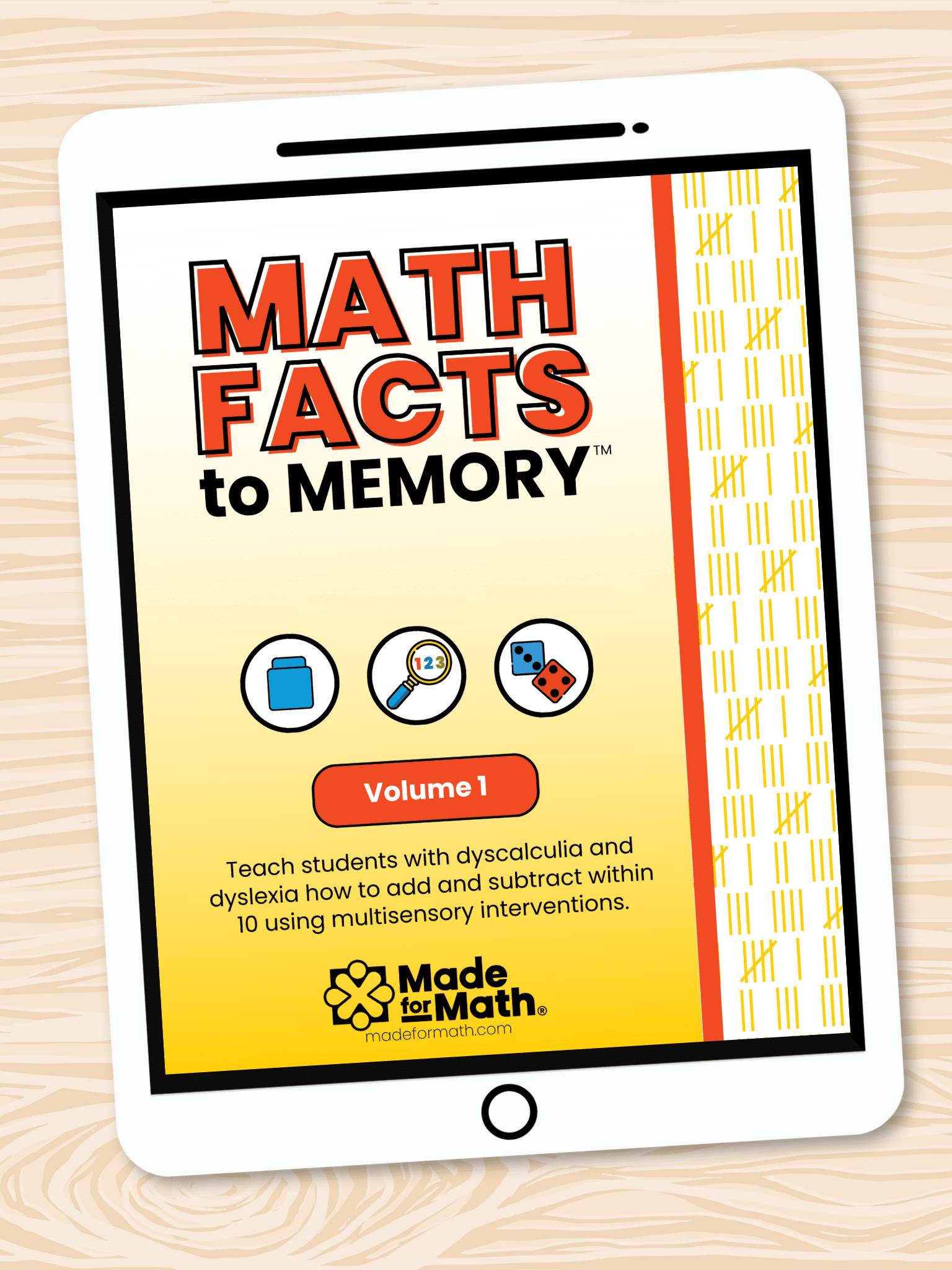4 Successful Dyscalculia Tools and Techniques for Educators
Table of Contents
Meet Giannis and Marie-Pascale
In this illuminating interview, we dive into the backgrounds and motivations of two remarkable individuals, Giannis Karagiannakis and Marie-Pascale Noël. Giannis, a mathematician by training, has dedicated his career to helping children with learning difficulties in mathematics. Marie-Pascale, a neuropsychologist, embarked on her journey to understand and address numerical development in children.
Together, they authored the groundbreaking book, Effective Teaching Strategies for Dyscalculia and Learning Difficulties in Mathematics: Perspectives from Neuroscience. (Affiliate Link)
Giannis Karagiannakis
Giannis Karagiannakis’ journey into studying numeracy and learning differences was deeply rooted in his personal experience with dyslexia. He discovered his own dyslexia diagnosis in his early twenties, a condition that affected his literacy skills, spelling, and overall language abilities. Despite these challenges, Giannis excelled in mathematics and developed a strong passion for the subject.
This personal revelation led Giannis to explore the puzzling question of why dyslexics often face difficulties in mathematics despite their proficiency in other areas. He recognized that, at the time, dyslexia’s impact on mathematical abilities was not widely understood, especially in Greece.
Motivated by his own experiences and a desire to help others facing similar challenges, Giannis embarked on a journey to bridge the gap between dyslexia, mathematics, and education. His goal was to share his insights and find effective methods to support students with learning differences in mathematics, ultimately making a meaningful impact on their educational journeys. This personal connection and determination laid the foundation for his impactful work in the field.
Marie-Pascale Noël
Marie-Pascale’s journey into number research and her dedication to understanding dyscalculia was a result of her profound fascination with cognitive psychology and neuropsychology. Although her math teacher saw her potential as a mathematician, Marie-Pascale was more drawn to the human aspect of psychology and building relationships with people.
During her studies in psychology, she was captivated by the power of cognitive psychology and the methods used to dive into the intricacies of the human mind.
Marie-Pascale’s path took a significant turn when she began working with patients who had lost their numerical abilities due to various challenges. Through extensive assessments and the development of innovative tools, she gained deep insights into their specific numerical difficulties. However, a recurring theme emerged: many of these individuals had not only numerical issues but also language and memory difficulties. This realization left her feeling somewhat frustrated and limited in her ability to provide comprehensive support.
Her perspective shifted when she encountered a woman with developmental dyscalculia, a condition that had profoundly impacted her life from childhood into adulthood. This encounter highlighted the life-altering consequences of developmental dyscalculia and the lack of recognition and support for individuals facing this challenge.
These experiences fueled Marie-Pascale’s determination to contribute to the field of dyscalculia. At the time, there was a lack of literature and resources on the topic. Recognizing the potential to make a profound difference in the lives of those with dyscalculia, she embarked on a mission to unravel the mysteries of this condition.
Marie-Pascale and Giannis crossed paths at a conference in London, where Marie-Pascale was the keynote speaker. Marie-Pascale liked his insights into practical tools for enhancing math education, especially for children with learning challenges. Following the conference, Giannis reached out to Marie-Pascale and proposed a visit to Belgium to initiate their collaborative journey. This serendipitous encounter marked the beginning of writing their book, Effective Teaching Strategies for Dyscalculia and Learning Difficulties in Mathematics: Perspectives from Neuroscience.
What Dyscalcuila Looks Like in Adulthood
Living with dyscalculia can be challenging and have a significant impact on various aspects of a person’s life.
Many adults with dyscalculia face financial struggles, often stemming from limited job opportunities due to their mathematical difficulties. Simple everyday tasks that involve numbers, such as going shopping, can induce anxiety. Handling money becomes daunting, as individuals may struggle to count bills or verify the correctness of their change. In a world where financial transactions are increasingly digital, even managing a bank account can be a complex endeavor.
Cooking, something many people enjoy, becomes a source of stress for those with dyscalculia. Following a recipe and adjusting quantities for a different number of servings can be overwhelming. Even activities like helping a child with math homework become impossible for parents with dyscalculia, leading to feelings of inadequacy and isolation within their own families.
One common challenge highlighted by Marie-Pascale is difficulty in reading and understanding large numbers, such as four or five-digit figures. This inability to grasp the magnitude of such numbers can hinder various aspects of life, particularly when dealing with significant financial decisions.
Adrianne mentions that it’s common in America to hear the words “I’m just bad at math and that’s okay”, but stresses that there are some serious negative impacts to this mindset. She goes on to say that she finds it difficult to understand numerical information in a table format, however, if the same information is visually represented through graphs or line plots then it makes a lot more sense.
Adrianne emphasizes the importance of developing the ability to reason with numbers visually, saying that this skill can be both taught and learned. Visual representations of numerical data, like graphs, can significantly aid in comprehension for individuals with dyscalculia and other math-related difficulties.
The Four Main Difficulties with Dyscalculia
Imagine mathematics as a house of cards, with each layer representing a different level of mathematical understanding. Dyscalculic individuals often face challenges with the foundational layer, much like a weak base in a card house. When they attempt to build higher layers of mathematical concepts, these difficulties persist. Therefore, it’s essential to address and strengthen this foundational layer before progressing to more advanced mathematical concepts. This analogy illustrates that dyscalculic individuals struggle not only with advanced math but also with fundamental mathematical concepts.
In Marie-Pascale and Giannis’ book, Effective Teaching Strategies for Dyscalculia and Learning Difficulties in Mathematics: Perspectives from Neuroscience, they talk about the four main difficulties often found in individuals with dyscalculia and math learning disabilities. These four difficulties are:
Approximate Number System (ANS): ANS is the ability to quickly estimate the magnitude or set size of collections without the need for precise counting.
Subitizing System: Subitizing is our innate ability to quickly and accurately determine the exact number of items in very small sets without the need for counting. For example, when presented with two or four dots, we can immediately and precisely recognize that there are two or four dots without counting. Read more about subitizing here.
Enumerating: Enumerating involves counting the items one by one, which may take more time compared to subitizing but results in precise counting, allowing you to determine exactly how many items are in the set.
Number Positioning on the line: In this task created by Bob Siegler, a child is presented with a line having two numbers at each end, such as 0 and 100. They are then given a number, like 40, and asked to place it on the line where it should go. This task assesses a child’s understanding of symbolic numbers and their ability to map them onto an analog representation of numerical magnitude.
Giannis emphasizes the importance of the number line as a strong predictor of numerical development. He recommends using number lines as a tool to help children build their understanding of numbers and their placement on a number line. Giannis mentions that number lines can be adapted for different age groups, from very young children using a simple 0 to 10 range to older students dealing with rational numbers, fractions, or decimals.
Marie-Pascale states that one of the main difficulties for children with dyscalculia is accessing the meaning of symbolic numbers, or the numbers you learn through your culture. These students struggle to quickly comprehend the magnitude associated with these symbols, like understanding that “3” represents three objects. This challenge extends to rational numbers, fractions, decimals, and the entire numerical universe.
Marie-Pascale suggests that the complexity of mathematical language, including numerical operations and mathematical vocabulary, can also pose challenges for these children.
So, helping students with dyscalculia involves addressing their difficulties in understanding the meaning of symbolic numbers and navigating the broader realm of mathematical language and concepts.
Giannis shares his experience of having dyslexia while being interested in mathematics. He mentions that he didn’t initially know about his dyslexia and thought his difficulties were normal. To compensate for his challenges, he focused on developing strong reasoning skills. For instance, instead of memorizing multiplication tables, he used reasoning to quickly calculate answers.
Giannis highlights the importance of focusing on reasoning and deep understanding in mathematics rather than relying on explicit instruction that may overload the memory. He suggests that some dyslexic students struggle with procedural memory and stresses the need for a different approach that nurtures understanding and reasoning.
Different Approaches to Teaching
Giannis highlights the importance of offering different approaches for teaching students with dyscalculia, especially for adults who may have memory, procedural, or attention-related challenges. While explicit instruction is a common method, Giannis suggests that for adult students with specific difficulties, focusing on deep understanding and encouraging them to think critically and make connections can be more effective.
He also states the need for better training for special education teachers, as some of them may lack confidence in mathematics and resort to repetitive explicit instruction without nurturing students’ problem-solving abilities. Giannis believes that a more flexible and supportive teaching approach can better cater to the diverse needs of students with dyscalculia.
Adrianne agrees with Giannis’s perspective, stating the importance of teaching students with dyscalculia bigger mathematical concepts and helping them understand how the various components work together. This approach aims to enable students to grasp the broader picture of mathematics and how its elements function, allowing them to reason in a way that aligns with their cognitive processes.
Assessment for Mathematical Abilities
Giannis and Marie-Pascale have developed a comprehensive assessment tool called the MathPro-S that evaluates various cognitive skills related to mathematics. The full version of MathPro-S consists of 18 tasks, assessing skills such as the approximate number system, subitizing, memory, reasoning, visual-spatial tasks like number lines, and more. These tasks are designed to provide a comprehensive view of a student’s mathematical abilities.
Recently, they have also developed a shorter version of MathPro-S using Item Response Theory (IRT). This shorter version serves as a screening tool that can quickly identify students at risk for math learning difficulties. Once identified, these students can undergo a more detailed assessment with the full version of MathPro-S, conducted by an expert. This detailed assessment helps in creating individualized intervention programs tailored to the specific needs of each student.
The MathPro-S assessment has been standardized in multiple languages, including Greek, French, Flemish, Italian, and English, making it accessible to a wider audience. It is designed to assist educators and clinicians in assessing students’ mathematical profiles and guiding them toward appropriate interventions to improve their math skills.
Effective Teaching Strategies for Dyscalculia
Marie-Pascale expressed her desire for their book to bridge the gap between theoretical research and practical application in the field of remediation for children with learning difficulties, particularly dyscalculia. She highlighted that some books are overly theoretical and disconnected from practicality, while others are filled with exercises but lack the necessary theoretical foundation.
Drawing an analogy from the earlier cards metaphor, she emphasizes the importance of understanding how the castle of cards looks in typical children and how the errors in children with learning difficulties reveals the mechanisms that need remediation.
Their book seeks to provide both the theoretical background and a structured pathway for developing remediation programs, ensuring that exercises are designed in a specific order that aligns with the developmental progression typical in children. In essence, the book aims to offer a unique and comprehensive resource that combines theoretical knowledge with practical guidance for educators and clinicians working with children facing math learning challenges.
Are You Looking for a Better Way to Teach Math Facts?
Check Out Math Facts to Memory™ Vol 1 (DIGITAL ONLY)
Stop wasting your time with flashcards and rote memorization for students that learn differently. Discover the power of multisensory techniques in math fact instruction.
Over 40 lessons covering adding and subtracting within 10
- Explicit instruction for both YOU and the student
- Specific language to enhance learning
- Math vocabulary pages featuring morphology and gross motor movement
- Student practice sheets
- Games to practice math facts
Math Facts to Memory™ Volume 1 is appropriate for all learners but is essential for those with dyslexia and dyscalculia.
Grab your copy for just $35.
Updates for the life of the product!
MFM Authors

Jennie Miller
Marketing Assistant
is our Marketing Assistant and content creator here at Made for Math. Jennie loves being part of a company that is working to make mathematics accessible to children with dyscalculia.

